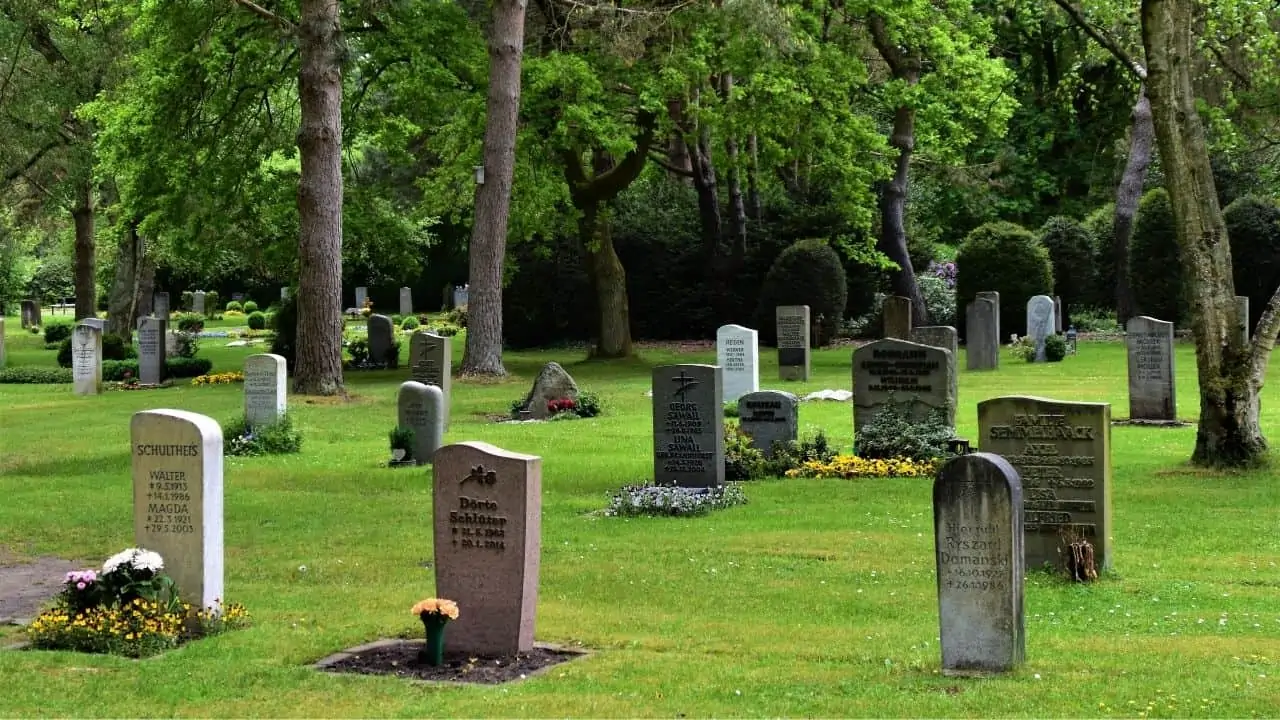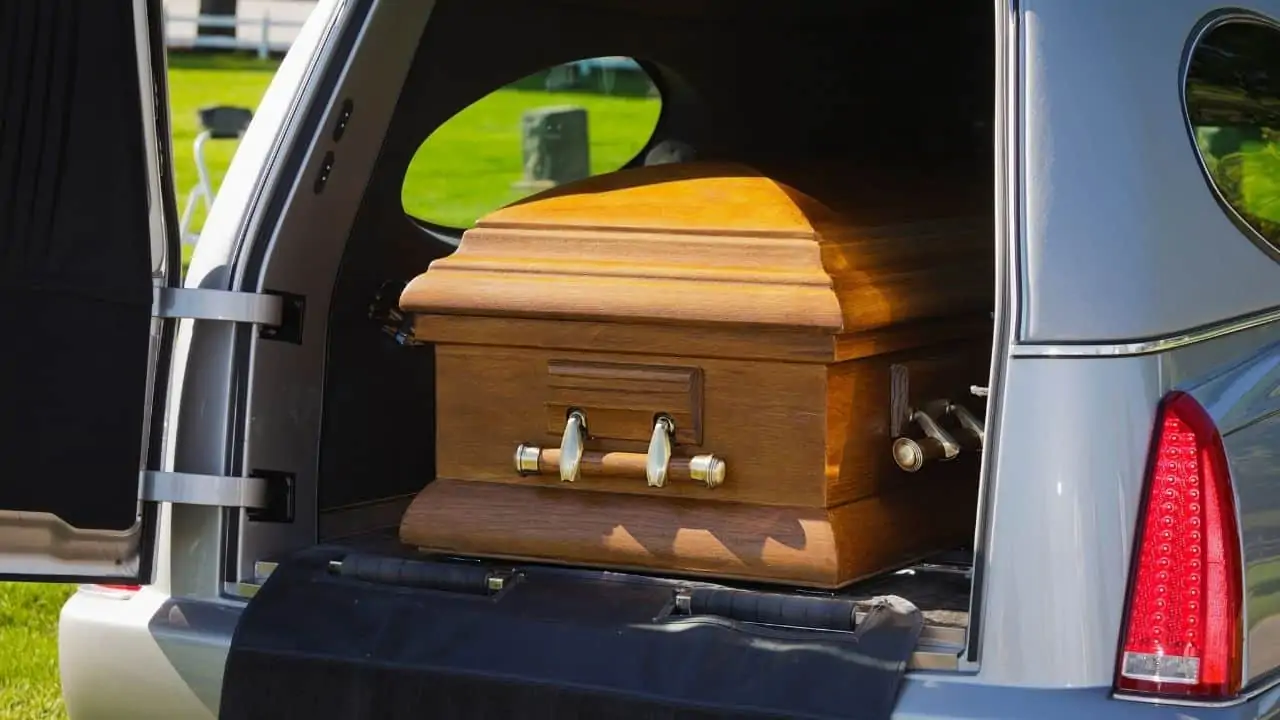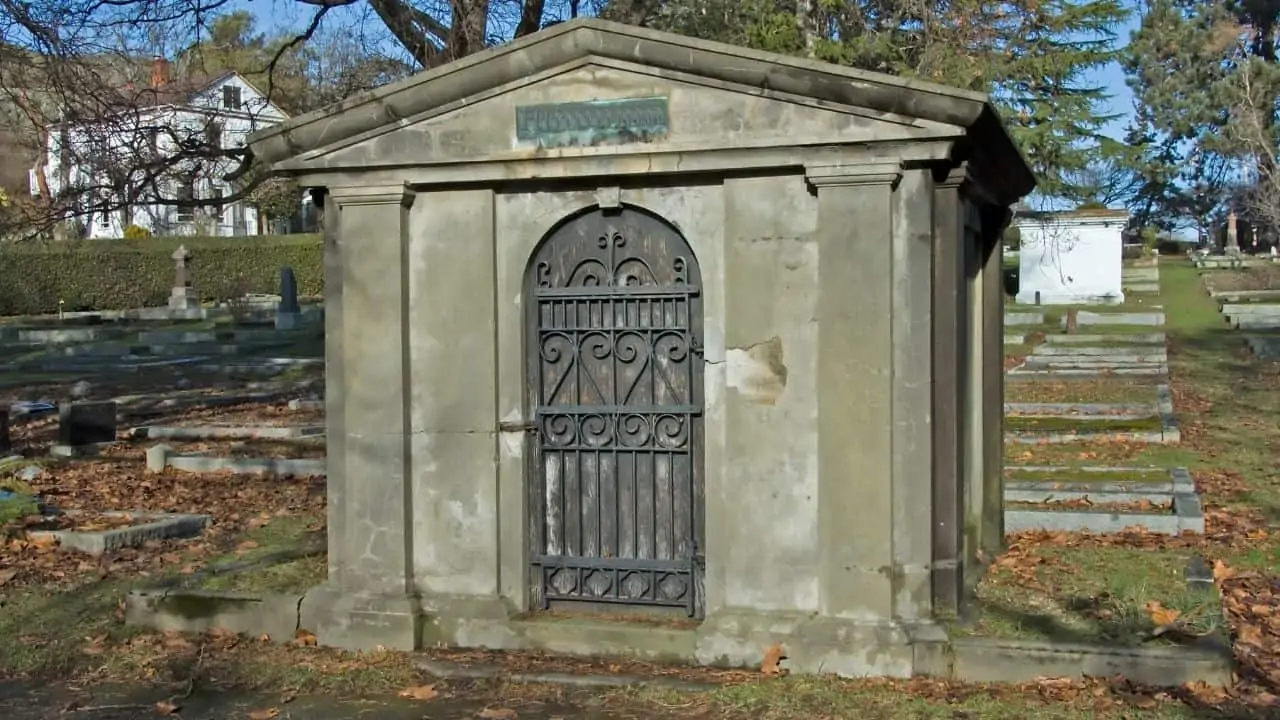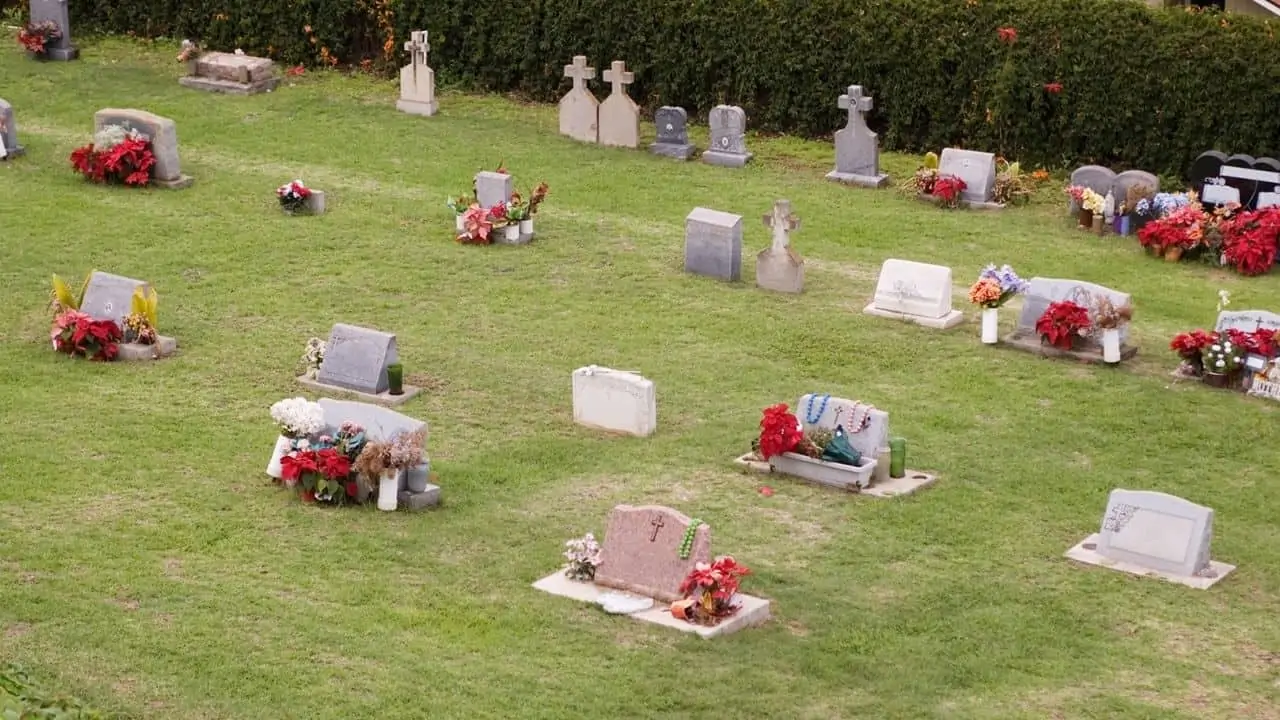
Most of us aren’t so keen to dwell on our eventual demise (or anyone else’s, for that matter). And when most people steer clear of a particular industry or investment, that leaves little competition for the outliers with stronger stomachs.
One such is the cemetery business, a $4.4 billion industry in the U.S. and itself part of the even larger $57.8 billion death care industry. However, only around 7,100 cemetery businesses ply their trade currently, leaving plenty of room for new entrants.
And with 65 million baby boomers rapidly entering their retirement years, the death care industry will likely enjoy a lively future.
Cemeteries combine land investing with an entrepreneurial business. If you’ve ever thought about running a land-related business, cemeteries may be a niche option to consider.
How Do Cemeteries Make Money?
Cemetery businesses make money in many ways, and the most profitable ones get creative in finding new ways to add revenue streams.
Keep the following sources of revenue in mind as you explore the cemetery industry.
1. Selling Plots, Vaults, or Other Resting Places
At its core, the cemetery business revolves around providing final resting places for the dead. That includes burial plots, of course, but it also includes spaces in burial vaults, mausoleums, columbariums (buildings with spaces from urns), crypts, or other places to house human remains.
Note that cemeteries don’t sell the land itself but rather the usage rights for it.
In recent years, more families have started pre-purchasing burial plots while still alive. That helps cemeteries recover their startup costs earlier.
But selling these spaces comes with two fundamental problems for cemeteries.
First, they’re finite. Cemeteries eventually run out of space. When that happens, cemeteries lose nearly all their ability to generate new revenue.
This raises the second problem: the requirement to contribute a percentage of all plot sales to a perpetual care trust. The trust pays out interest to the cemetery after it has sold its last plot, enabling them to continue maintaining the grounds of the cemetery (more on that later).
To get around that requirement and to bring business in the door, many cemeteries underprice their plots. They then make up their profits by charging more for all the other auxiliary services they offer.
2. Opening and Closing Graves and Other Resting Places
Cemeteries charge a pretty penny for digging a grave, inserting the casket, and interring it.
If many cemeteries undercharge for burial plots, they make up the difference by overcharging for interment.
3. Exhumation and Reinterment
Likewise, cemeteries charge dearly to reopen a closed grave, then reinter the body.
This doesn’t happen often, but law enforcement may require a second look at a body, or family members may change their minds about burying something valuable with a loved one.
4. Transportation of Bodies
Cemeteries charge transportation fees for moving a dead body from the funeral home to the grave, usually in a hearse.
Sometimes the funeral home provides this service — but then again, many cemeteries operate on-site funeral home services.
5. Funeral Home Services
Funeral homes host funerals, of course. But they also offer cremation and prepare dead bodies through embalming. Cemeteries can roll all these death care services together to create efficiencies in their business and earn more.
According to the National Funeral Directors Association, the average funeral cost was $7,848 in 2021. That does not include the headstone or cemetery services such as the plot itself or opening and closing the grave.
Many people invest in funeral insurance to help mitigate these costs, ensuring their loved ones aren't burdened with unexpected expenses during an already difficult time.
6. Caskets, Urns, Grave Liners, and Other Containers
As a society, we tend to frown on dumping bodies in the ground without a container.
Typically, cemeteries that offer funeral home services sell caskets, urns, and other containers to house the remains of the dead. Often these come with an extremely high markup—no grieving family member wants to feel “cheap” in housing their loved one.
Today, many families prefer biodegradable caskets as a green alternative. They want their loved ones to return to the earth rather than trying to seal them eternally. That offers yet another upsell opportunity for marketers.
Many cemeteries also require clients to purchase a grave liner as well. Grave liners act as containers for the container, housing the casket. It all means more dollar signs for the cemetery.
7. Gravestones and Installation
All cemeteries charge money to install a gravestone or other marker. Some also provide the gravestones themselves.
If the cemetery doesn’t sell them directly, they usually partner with an outside memorial provider. And earn a referral fee on the business they send to them, of course.
8. Construction and Installation of Mausoleums
Cemeteries usually offer expensive mausoleums as a higher-end alternative to burying beneath the ground.
Wealthier families often pay the cemetery for custom mausoleums, either built directly by the cemetery or in partnership with a specialty contractor.
9. Referral Fees From Other Businesses
Whatever related services cemeteries don’t perform themselves, they can partner with other local businesses in exchange for referral fees.
For example, cemeteries often partner with local florists to provide flowers for funerals, burials, or graveside ornamentation. Similarly, cemeteries offering funeral services and wakes partner with caterers. Or they can go even further and partner with services such as Saint Diamonds or Eterneva that convert a body into a diamond.
10. Additional Maintenance
Cemeteries can also offer upsells for special maintenance of the memorial site. That could include gravestone polishing or maintaining live flowers growing beside the grave.
11. Creative Services
There is no limit to the creative ways any business can build new revenue streams.
For cemeteries, that could include anchoring caskets to prevent them from being washed away by flooding or the ocean. Some funeral homes and cemeteries offer to preserve loved ones’ tattoos after they shuffle off this mortal coil. It just gets weirder from there, but creativity usually comes with rewards in the form of higher revenue.
The Costs of Starting and Running a Cemetery
Like all businesses, cemeteries come with both one-time startup costs and ongoing costs.
Startup costs include buying the land itself, potentially rezoning it, building an office and reception space, adding a parking lot, and landscaping the property to look appealing. You may also need a license to operate a cemetery in your state.
On an ongoing basis, you can expect labor costs for gravediggers, landscapers, gravestone installers, security, and possibly undertakers and funeral home managers if you offer those services. Other ongoing costs include property taxes, utilities, water and irrigation, building maintenance, business license renewals, and non-labor security expenses, such as camera systems.
All these costs vary based on the size and location of the cemetery, of course. Larger cemeteries cost more to maintain, and urban areas come with higher real estate prices, property taxes, and labor costs.
How Cemeteries Cover Costs After Selling Their Last Plot
Unlike most businesses, cemeteries are expected to continue operating forever. But how can they do so after they run out of burial space, products, and services to sell?
Cemeteries continue operating after reaching capacity through several revenue sources. First, they can expand by buying additional land, whether contiguous or in a completely new location.
Though uncommon in the U.S., some cemeteries go as far as reusing existing plots. They do this by writing expiration dates into burial plot contracts: after a certain number of decades, they reserve the right to resell the plot with a new grave marker. It’s certainly a more efficient use of space, and after a generation or two, no living relatives remain who knew the deceased.
Even if cemeteries don’t find a way to keep selling burial plots, they can continue selling some services, such as operating as a standalone funeral home and opening graves for the occasional exhumation.
But to prevent cemetery business owners from just closing down and disappearing after they run out of space, most states require cemeteries to invest a certain percentage of the plot sales into a perpetual care trust. A trust manager will invest the trust’s money, so it compounds over time—by the time the cemetery fills its last grave, it has accumulated a tidy sum. The trust fund then pays out interest and returns to the cemetery to continue funding its ongoing costs such as landscaping, maintenance, and property taxes.
Rules vary by state, but many states require cemeteries to save and invest up to 10% of the revenue from plot sales directly into a perpetual care trust.
Of course, no business likes being told how to spend its money. To minimize the money that they have to set aside, many cemetery owners offer inexpensive plots as a loss leader, then make up their profits from all the other services, as outlined above. Cemeteries don’t have to set aside a percentage of revenue from other services offered.
When Cemeteries Kick the Bucket Themselves
When space runs out, so does most of the revenue for cemeteries. They’re supposed to continue maintaining the grounds and paying property taxes, but that doesn’t mean they always do.
In the U.S., unlike most of the world, burial plots are generally considered to be sold in perpetuity. If cemetery owners abandon the property and the business, they can find themselves the target of lawsuits from families who purchased plots for themselves or their family members.
Cemeteries don’t declare bankruptcy often, but when they do, the local municipality sometimes takes over maintenance. Volunteers often help out with maintaining cemeteries that house their loved ones if the cemetery business goes under.
The federal government doesn’t impose legal restrictions on if or when cemetery land can be repurposed. Occasionally, courts may allow real estate developers to buy abandoned cemetery land to rezone and build new structures on top of it. The ex-owner of the cemetery may be forced to cover the cost of moving bodies, or the costs may be left to family members if they feel inclined to move their loved ones’ remains.
Challenges and Changes in the Cemetery Industry
Anyone considering the cemetery business should understand how rapid social changes will likely affect the industry in the decades to come.
First, the burial of whole bodies is declining in popularity in favor of cremation. In 2005, less than a third (32.4%) of Americans were cremated. By 2020, that percentage rose to 56.1%, and by 2030, the Cremation Association of North America projects that 72.8% of Americans will be cremated.
That translates to smaller, cheaper burial sites — if surviving family members bury an urn at all. Many opt to keep urns in their homes or scatter ashes at favorite sites. And that says nothing of the smaller, cheaper containers compared to caskets and the lack of secondary services required, such as grave digging, transportation, and so on.
Land shortages near major cities add another challenge. They take up valuable space that could be used for building residential properties or commercial buildings. That leads to less appetite for new cemeteries and fewer zoning approvals, driving down demand for burial versus cremation. In Berlin, for example, some cemeteries have been converted to public parks and other productive land uses for the living.
Finally, cemeteries cause significant environmental impact, which is an increasing sociopolitical risk for the industry. Extensive lawn chemicals are just the beginning; formaldehyde (key to embalming fluid) has been labeled a carcinogen. A study published in the Berkeley Planning Journal found that the death services industry uses 30 million board feet of wood, more than 104,000 tons of steel, 1.6 million tons of concrete for burial structures, and 800,000 gallons of embalming fluid every single year. The lumber alone is enough to build 4.5 million homes each year.
Of course, these trends could work to your advantage. You can offer eco-friendly burial services, and crematory urns take up far less space in graveyards, allowing you to service more customers and continue selling lots longer. The growing appetite for repurposing cemeteries could also prove an advantage, potentially allowing you to sell the land after filling the last plot.
Final Thoughts
Just as with any business, the more streams of revenue you can generate, the better you’ll be able to weather changes in demand.
Research local zoning requirements and the approval process before buying land to use as a cemetery. And as much red tape as you have to go through to open a cemetery business, remember that it’s not so easy to exit, either.
















